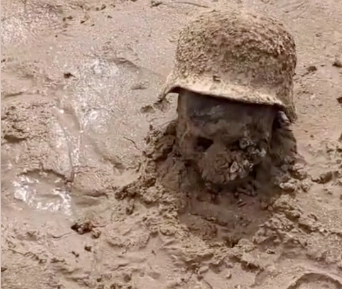In his thesis to the University of Texas at Austin, entitled “Surviving Total War in Kherson Region, Ukraine in 1941 – 1945”, Vladyslav C Alexander tells the story of the suffering of the people of Kherson city and the surrounding region during the period following the occupation of the area by Nazis forces, in August 1941, and the reoccupation of the destroyed city by the Red Army, in March 1944.
JOIN US ON TELEGRAM
Follow our coverage of the war on the @Kyivpost_official.
Alexander’s account echoes much of what has happened during the period Kherson and its environs were under Russian occupation, between the full-scale invasion in February 2022 and the retaking of the city by Ukrainian forces in November.
The German Occupation: 1941 - 1943
Kherson and the wider area, that includes Mykolaiv, was part of a single administrative unit during World War II: the Mykolaiv region. It was strategically important to the Russian Empire and then the Soviet Union and became even more so during the German invasion of World War II because of the access it afforded to the Black Sea and the water resource that is the Dnieper River.
The region was ethnically diverse, as Catherine II had encouraged emigration to the area. Nationalities included Ukrainians, Russians, Germans, Poles, Jews, and Greeks lived peacefully together until the Germans came, when it became just another killing ground. The SS and their Romanian auxiliaries persecuted, punished or killed communists, Jews, partisans, Red Army soldiers, POWs or anyone who was labeled as being, in any way, pro-Soviet.

Sahaidachny: Ukrainian Leader Whose Cossacks Saved Europe From Ottomans
Records show that the Nazi occupiers killed more than 100,000 civilians in the wider Kherson region, of which around 17,000 were from the city itself, as well as torturing and killing around 40,000 soldiers and POWs.
In addition, it is estimated that around 60,000 men and women were transported to Germany as slave labor during the 31 months of occupation. All this was is in addition to the around 50,000 troops from both sides who died during the original German invasion and the retaking of Kherson by Soviet forces, many of who perished trying to cross the Dnieper and whose remains are now being uncovered.
The suffering for the civilian population of Kherson didn’t end there. Local civilians who co-operated with the Germans, many under duress were persecuted as collaborators by the Soviet authorities when they returned to the region in 1944.
The Russian Occupation: Feb – Nov 2022
Kherson was under Russian occupation for almost 9 months from being occupied on March 2 2022 after six days of intense fighting. While there was no killing on the scale of that of the Germans during WWII or indeed that of the Russian occupiers did in other parts of Ukraine such as Bucha, they did all they could to eradicate all traces of Ukraine in Kherson; burning Ukrainian books, looting museums, attempting to ban the Ukrainian language and abusing locals. Abuse included rape, beatings and murder as well as widescale theft, burglary and looting.
The residents of Kherson initially protested against the occupation of the city, holding rallies, where people carried Ukrainian flags and chanted “Kherson is Ukraine!” These were dispersed by the Russian military: firing shots, throwing tear gas and stun grenades.
In response to the protests Russian troops began to patrol the streets armed with assault rifles, raided the homes of suspected activists and soldiers, and took people away for questioning many of whom died, or remain unaccounted for.
Many tried to leave occupied Kherson directly to Ukrainian held territory but were stopped at Russian checkpoints and turned back. On occasions cars were confiscated and those who tried to avoid being stopped were shot at. A number of residents took a round-about route to escape, traveling to Crimea and from there going to Georgia or Azerbaijan.
In September, a few weeks before the liberation of the city, the occupation authorities of Kherson held the so-called "referendum" for inclusion of the Kherson into the Russian Federation. This “free and fair” process involved armed troops “escorting” residents to the polling stations, although many avoided this by absenting themselves from home on the day.
Russia claimed that, while polling stations were largely empty, over 87 percent voted in support of joining Russia.
In the wake of that the pro-Russian administration that had been installed began to call for its citizens to apply for Russian passports, a process that on the northern side of the Dnieper was cut short by the successful liberation of the city. Pressure continues to be applied to those in the areas south of the river that are still occupied to accept Russian citizenship.
Following the destruction of the dam and the subsequent flooding, it was reported that Russian forces and its proxies in the occupied areas are refusing to evacuate or otherwise help those not in possession of a Russian passport, according to a report by the General Staff of Ukraine's Armed Forces on June 10.
It is to be hoped that, as the Ukrainian counteroffensive, against Moscow’s illegal annexation of Kherson and the other regions of Ukraine, relief is just around the corner.
You can also highlight the text and press Ctrl + Enter






